Ripening strawberries is the process of enhancing their sweetness and juiciness after they have been picked. Although strawberries do not continue to ripen significantly after being harvested, you can improve their flavor and texture by storing them properly.
Strawberries are small, red, juicy fruits with a sweet flavor and a slightly tart undertone, characterized by their seeds on the outer surface. To ripen these soft, red fruits, people tend to do anything from keeping the strawberries in a dark environment to keeping them in a paper bag for ripening.
So make sure not to miss some ways to ripen strawberries after they’re picked or even when the fruits are still on the vine. Then, let me guide you through the clear signs of ripeness in strawberries.
Moreover, learning how to store ripe strawberries is needed to prolong these fruits and some mistakes in ripening strawberries. At the end, I’ll introduce some popular used in culinary of these red and juicy fruits.

How to Ripen Picked Strawberries?
Strawberries only ripen naturally on their plants. Once harvested, you can try out these two approaches to ripen the fruits.
Ripen Strawberries with Banana
Putting young or not fully-developed strawberries into the same container as bananas can help them ripen. Here are exactly what you need to do:
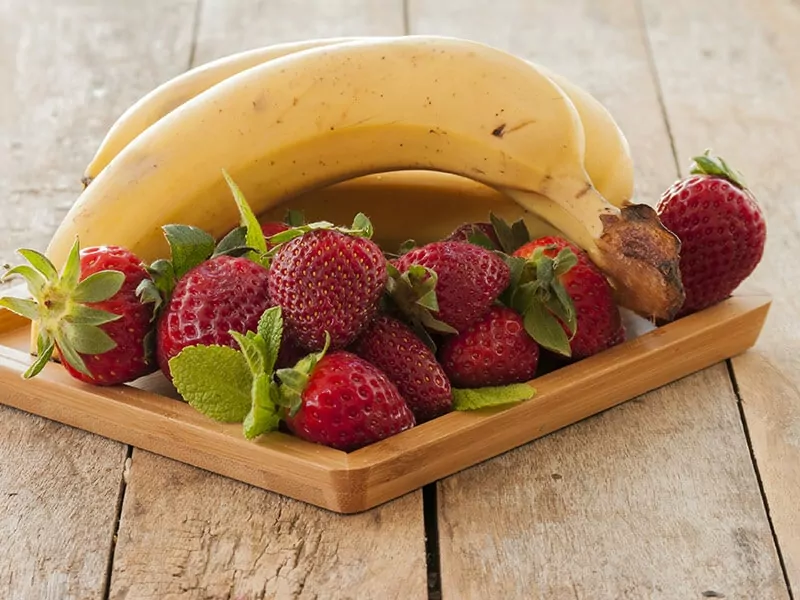
Since bananas release ethylene, a substance that facilitates harvested strawberries to ripen, some strawberries may become overripe or decay sooner than expected.
Ripen Strawberries at Room Temperature
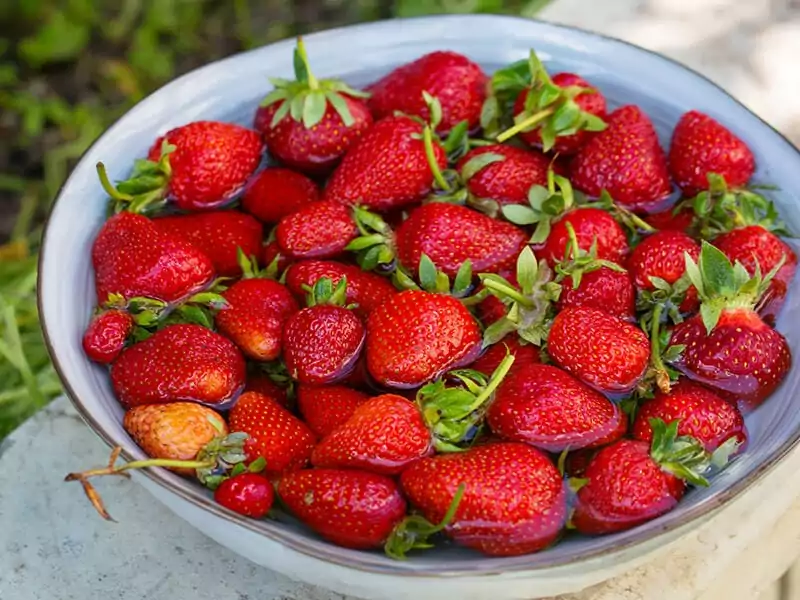
To ripen strawberries at room temperature, you will need a bowl of water and do some of the following procedures.
That’s not all, as these are only the approaches for picked strawberries. Alternatively, you can have some way to enhance the ripening process of strawberries right from the plants.
How to Ripen Strawberries on Their Plants?
Strawberries on plants can be ripened fast in a convenient environment. Go ahead with these 3 great ideas and practical approaches to speed up the ripening process:
1. Fertilize Plants & Rich Soil
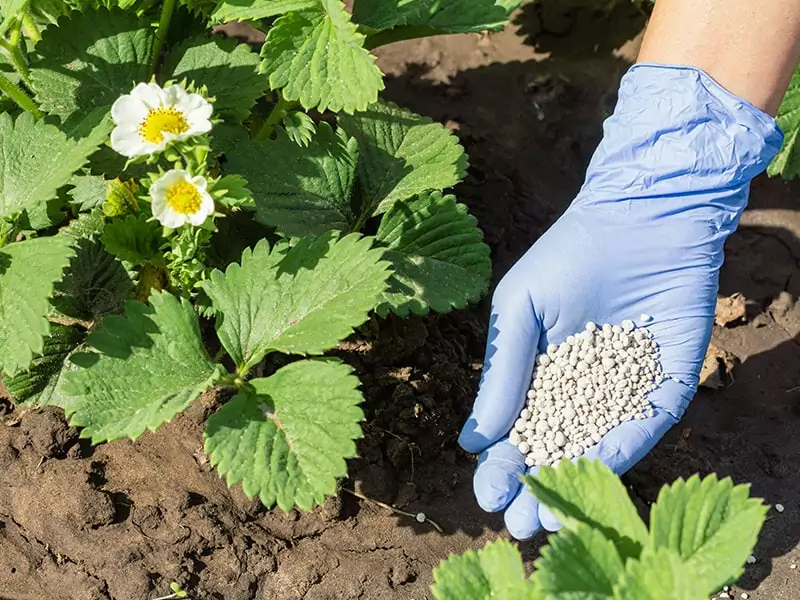
Fertilizing strawberries is absolutely an excellent way to ripen strawberries faster. This way also makes strawberries well-flavored and sweeter.
Strawberries grow prosperously in soil with a sandy texture and rich compost. It’s a good idea to mix aged compost with rich organic manure (like pelleted chicken manure) and feed the plants.
Furthermore, strawberries thrive at a mild acidic level with a pH of about 6.0 – 7.0. Controlling the soil’s acidity level is vital to ripening strawberries faster.
2. Water Regularly
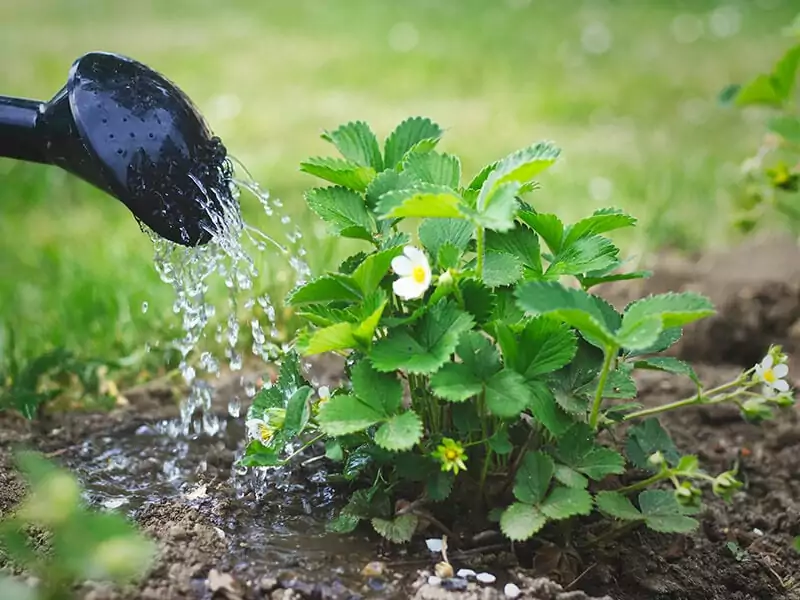
Strawberry growth needs lots of water, mainly when producing fruits. Keeping plants well watered can make strawberries sweeter and more delicious. The plant requires constant water in both dry and rainy seasons.
Beyond that, watering helps strawberries generate more fruits, leading to a larger crop, especially in summer.
Drained soil often weakens strawberries and makes them grow slower. Early morning and late evening are two ideal times for watering strawberries. As such, your plants won’t rot by sitting too long in water without sun.
3. Provide Enough Sunlight
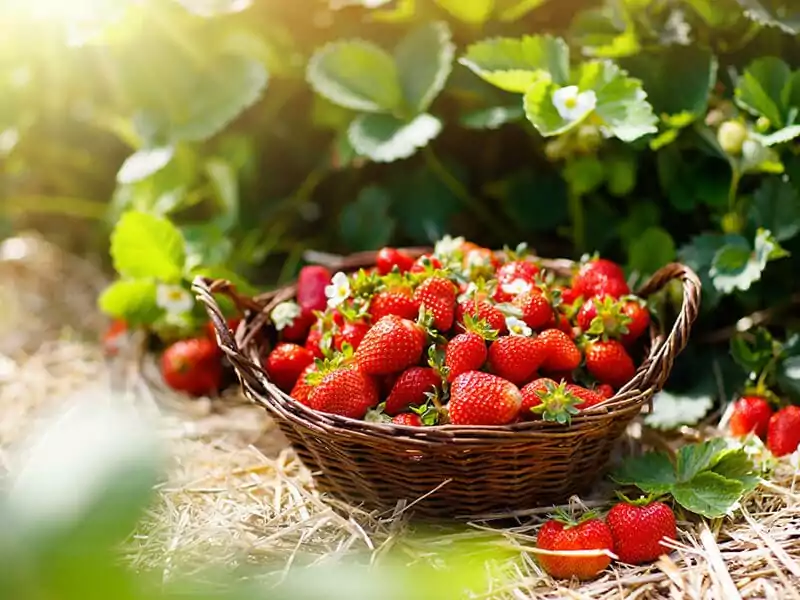
Strawberries grow best in full sunlight. Sunlight plays a crucial role in ripening strawberries. The fruit ripens faster if it has 8 hours of sunlight per day.
Alternatively, you can use a grow lamp instead (for example, a far-red-light lamp with 700-800 nm) to provide enough light for strawberries.
After going through the process of ripening strawberries naturally, there’s nothing better than learning the features of these fruits when they’re ripe.
What Signs Indicate Ripe Strawberries?
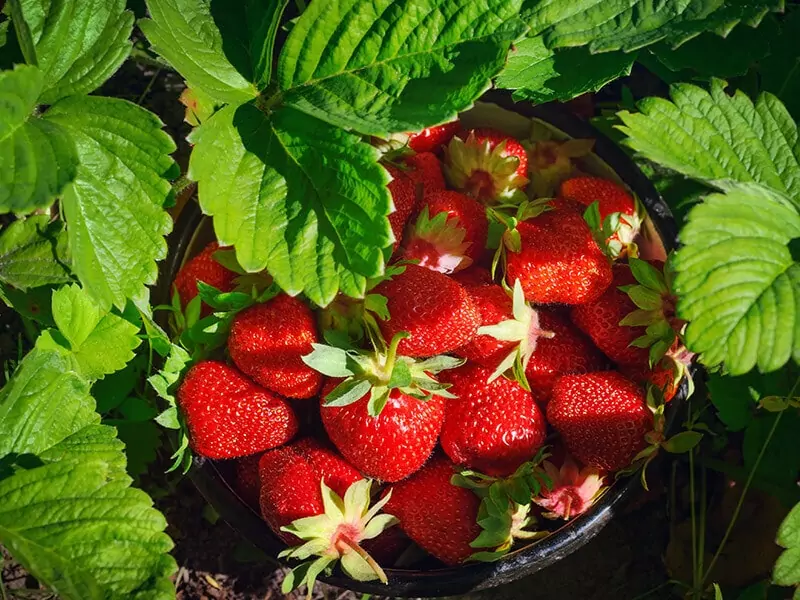
To determine the right time for harvesting strawberries at their peak ripeness, you should be on the lookout for these signs:
Once harvested, storing is what you need to do to maintain the fruit quality at its fineness.
How to Store Ripe Strawberries Properly?
There are many options for storing strawberries, with common choices including at room temperature, in a refrigerator, or in a freezer.
| Methods | Storage Time |
|---|---|
| At Room Temperature | Up to 2 days |
| In the Refrigerator | Around 1 week |
| Washed with Vinegar | Up to 2 weeks |
| In the Freezer | Up to 6 months |
At Room Temperature
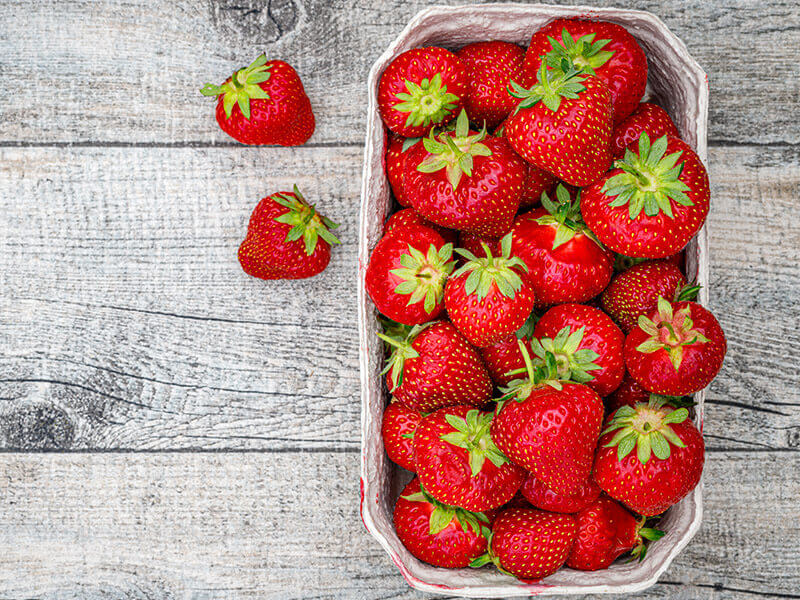
It’s best to store your strawberries on the countertop for as long as two days. Only wash strawberries just before serving to prevent mold growth.
Separate overripe, ripe, and unripe strawberries, consuming ripe and overripe ones first to allow unripe strawberries more time to ripen. Discard any spoiled strawberries to avoid contaminating the rest.
In The Refrigerator
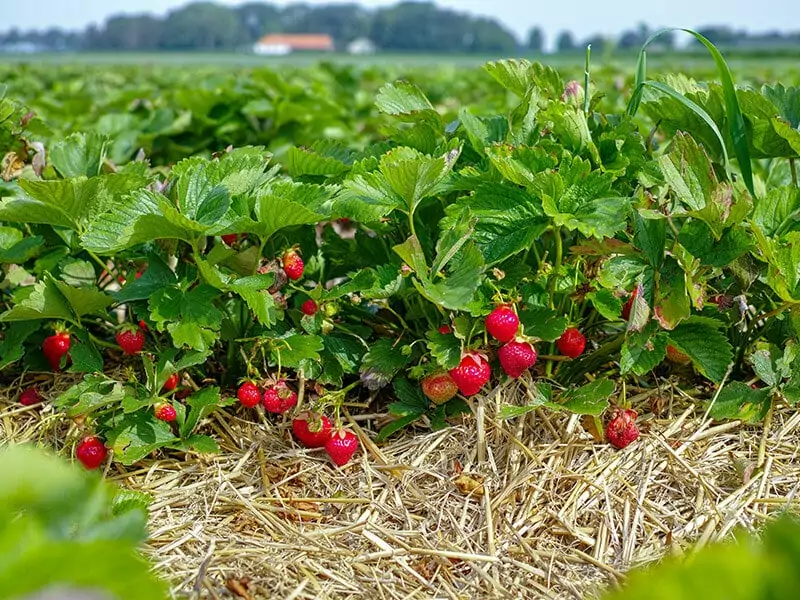
The strawberries are best kept in a cool and cold environment of the refrigerator. Ideally, you need to wash the fruits first before drying and storing them in a sealed box.
By doing this, the refrigerator should be able to maintain the strawberry freshness for around 1 week.
Washing Strawberries with Vinegar
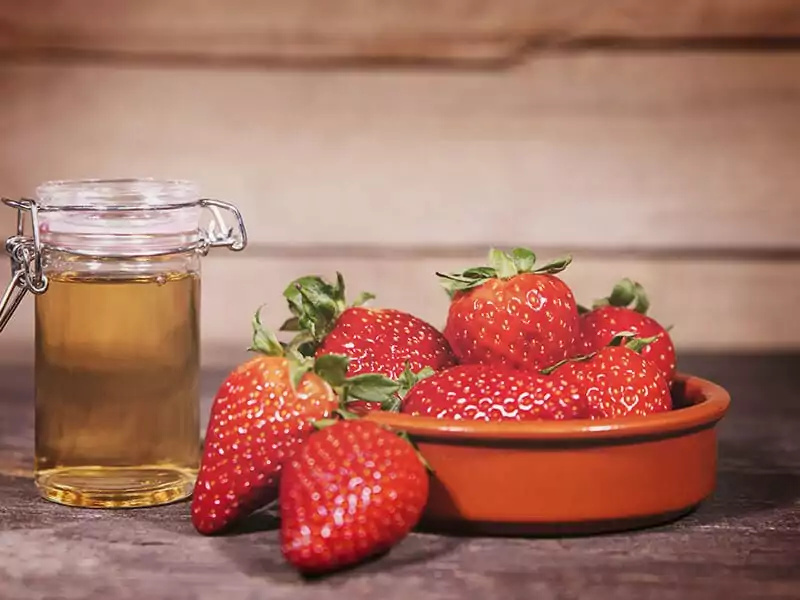
A fridge can prolong the strawberries’ lifespan for about one week. However, refrigerating strawberries can last up to 2 weeks with a vinegar pre-wash. Here are 3 steps to do it.
Step 1: Soak Strawberries in Vinegar Bath
Check and remove any moldy strawberries. Mix one cup of vinegar with two cups of water to create a vinegar bath before soaking the strawberries for 5 minutes.
Step 2: Clean and Dry The Strawberries
Take the strawberries out and rinse them with clean water in a colander to remove the vinegar smell. Dry the strawberries using paper towels.
Step 3: Refrigerate Strawberries
Prepare a container lined with a paper towel before placing it in the air-tight container. This method keeps strawberries firm, fresh, and vibrant for up to two weeks.
In The Freezer
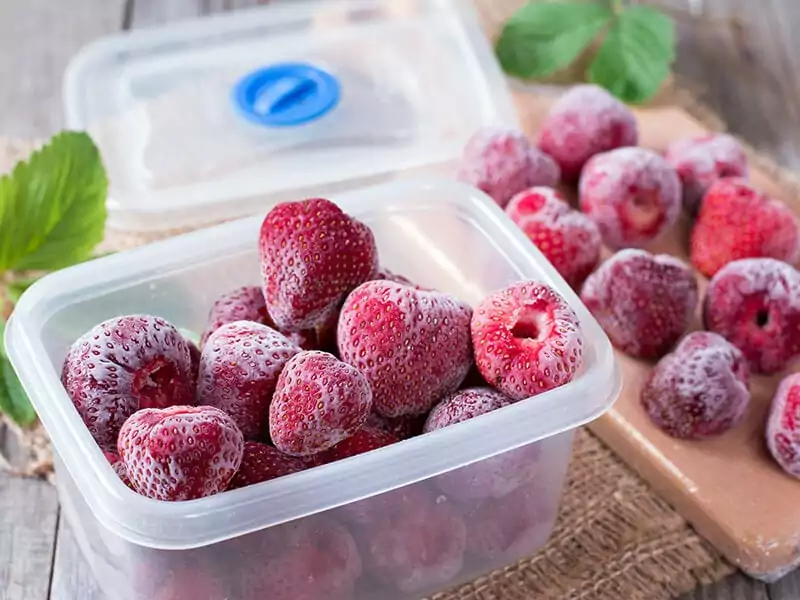
A freezer can prolong strawberries’ shelf-life by up to 6 months. Therefore, to keep these precious fruits longer, many are willing to shop for a freezer. Here are 3 steps to freeze your strawberries.
Step 1: Rinse And Dry Strawberries
After washing strawberries, dry them with paper towels to prevent mold and ice crystal formation in the freezer.
Step 2: Get Rid Of Green Stems
Use a paring knife to remove the green stems. Alternatively, some prefer leaving the stems intact for better preservation.
Step 3: Freeze Strawberries
Arrange strawberries in a single layer in plastic bags, push out all excess air, then place the bags in the freezer.
Next up, let me show you some common mistakes to avoid while ripening and storing strawberries.
Mistakes to Avoid When Ripening and Storing Strawberries
Despite having the right storage methods, you need to avoid making these four mistakes that can ruin strawberries during the ripening process:
- Exposing to Direct Sunlight: Avoid placing strawberries in direct sunlight as it can cause them to overheat and spoil rather than ripen evenly.
- Sealing in Plastic Bags: Do not seal strawberries in airtight plastic bags; they need some airflow to ripen properly and avoid mold growth.
- Washing: Washing strawberries before they are fully ripe can introduce moisture that promotes mold growth and spoiling.
- Leaving in Humid Areas: High humidity can cause strawberries to become mushy and moldy, so avoid leaving them in humid environments.
After sorting out things to avoid, you can start figuring out some culinary options to make use of the fresh strawberries.
How Are Ripe Strawberries Used in Culinary?
Fully ripe strawberries are perfect for culinary purposes, with some of the most common approaches.
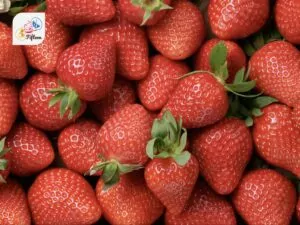
Fresh Eating
Enjoy them fresh as a snack or in fruit salads.

Desserts
Incorporate freshly ripe strawberries into cakes, pies, tarts, and pastries.

Smoothies
Throw ripe strawberries into smoothies and milkshakes for a sweet, fruity drink that cools you down.

Sauces and Syrups
Cook down the ripe fruit to make strawberry sauces, syrups, and competes.
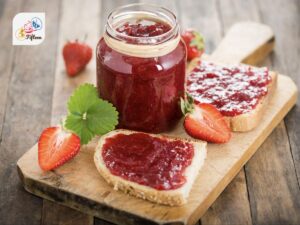
Jams and Preserves
Use in making homemade jams, jellies, and preserves.

Salads
Add to green salads or fruit salads for a burst of sweetness.

Ice Cream and Sorbets
Incorporate into homemade ice cream or sorbet recipes.

Toppings
Use as a topping for pancakes, waffles, and oatmeal.
Once you’ve uncovered the tactic to ripen strawberries, make sure to leave a comment down below to share your experience. Also, you should share this helpful information with people who are looking to ripen this bright red fruit.

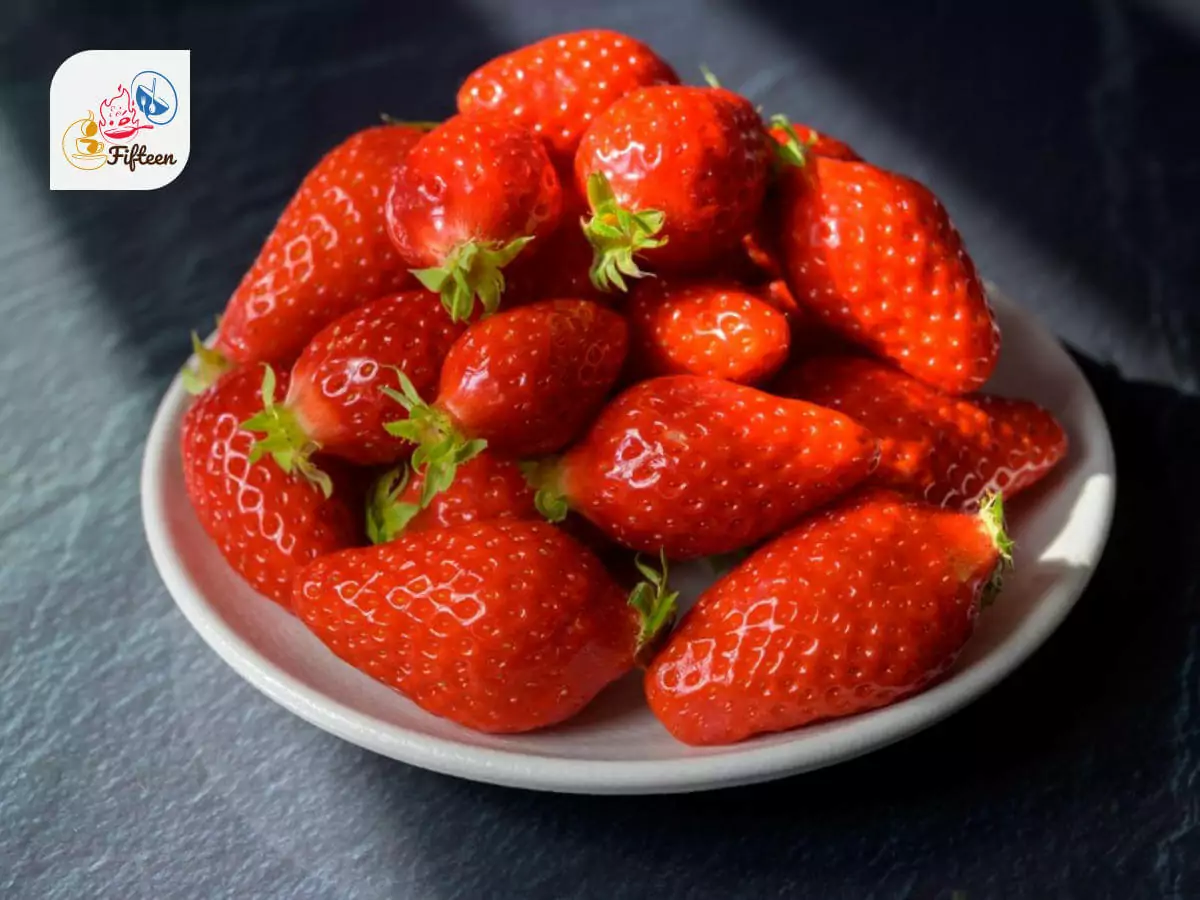
How To Ripen Strawberries
Equipment
- Fridge
- Container
Ingredients
- Banana
- Water
Instructions
Pickled Strawberries – Ripening with Banana
- Place ripe bananas and young strawberries in a sealed container. Wait a few days until strawberries are fully ripe. Afterward, let them sit out and return to room temperature.
Pickled Strawberries – Ripening at Room Temperature
- Remove the green stems and soak strawberries in water overnight, discarding any spoiled fruit. Cover the bowl, store in a cool, dark place for 2-3 days, then dry the strawberries before enjoying or storing in the fridge or freezer.
Strawberries on Their Plants – Ripening by Fertilizing Plants and Rich Soil
- Thrive them in sandy, compost-rich soil with a mild acidic pH of 6.0-7.0.
Strawberries on Their Plants – Ripening by Watering Regularly
- Strawberries need constant watering to enhance sweetness and yield. They should be watered in the early morning or late evening.



Jamie Scott
Editor in Chief, Senior Content Writer
Expertise
Home Cooking, Meal Planning, Recipe Development, Baking and Pastry, Food Editor, Cooking-video Maker, Western Food Evaluation Expert
Education
Le Cordon Bleu College of Culinary Arts
Local Community College, New York, NY
Jamie Scott is a skilled culinary expert and content creator specializing in Western cuisine. With over 15 years in the culinary field and formal training from Le Cordon Bleu, Paris, Jamie deeply understands how to blend nutrition with delicious flavors. His passion for cooking matches his commitment to making healthy eating accessible and enjoyable.
On Fifteen.net, Jamie brings a fresh perspective to classic dishes and beverages, offering readers insightful recipes, cooking tips, and a fresh view on meal planning that emphasizes taste, health, and simplicity.